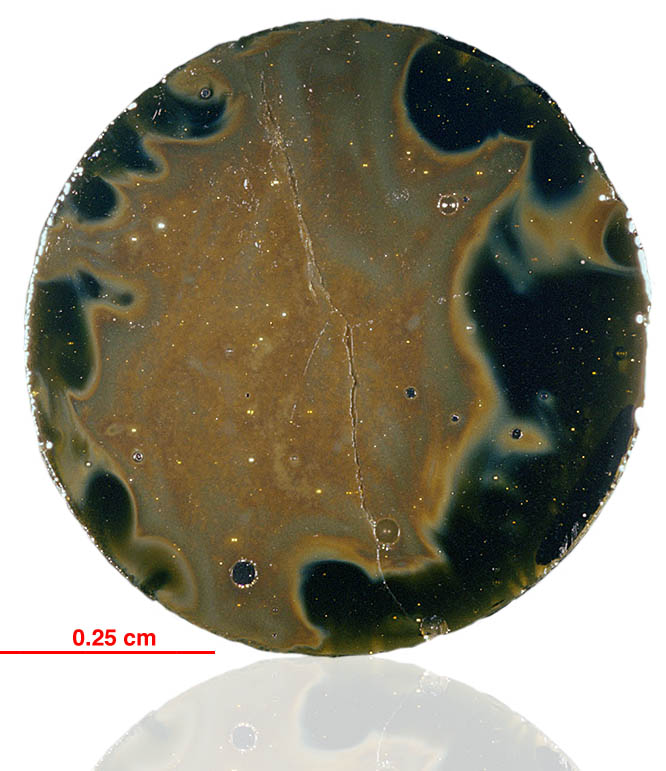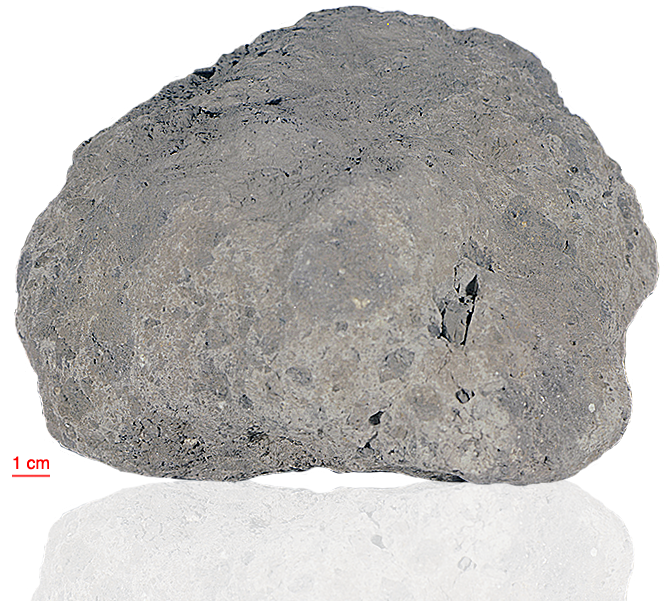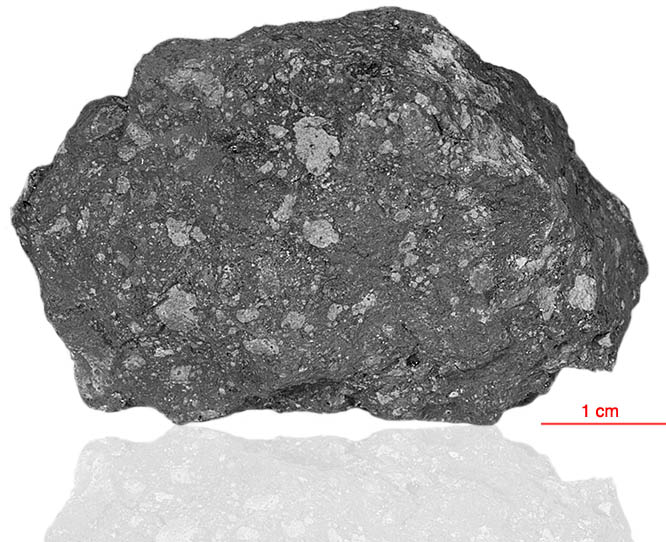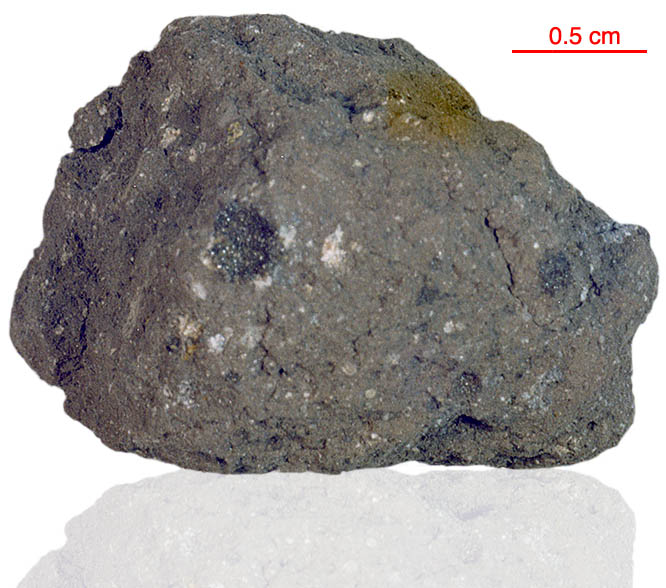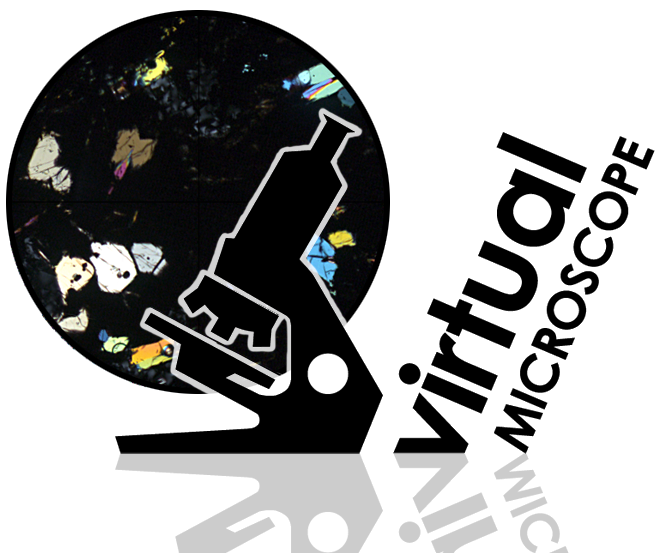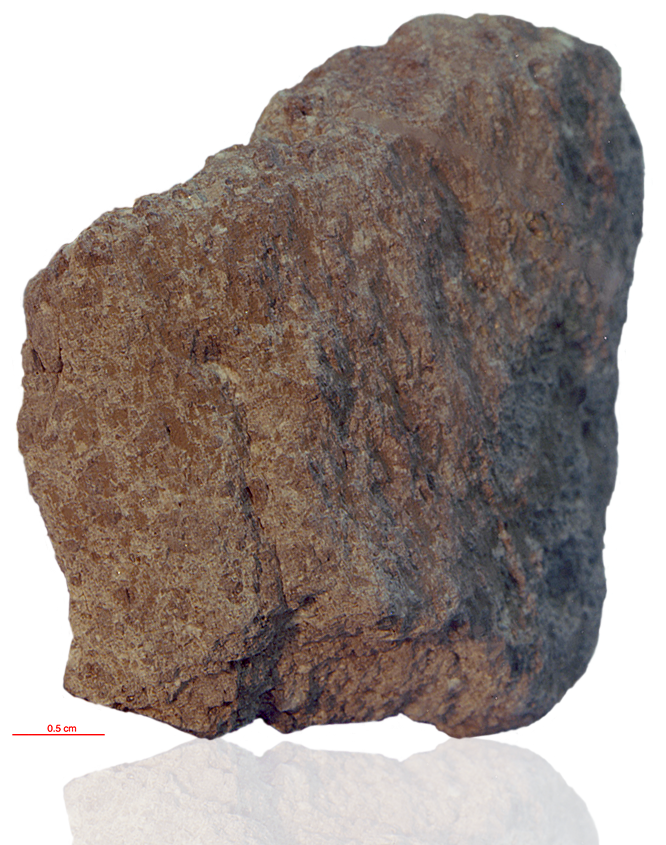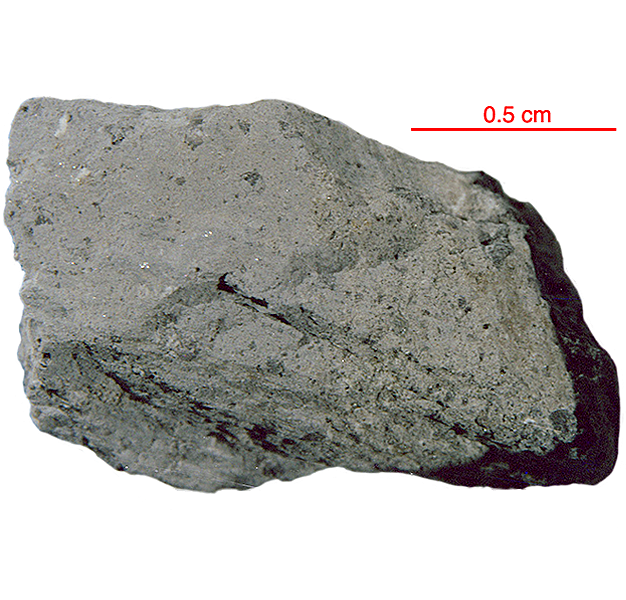
Fact sheet
14076 was one of 7 small rocks collected from the bottom of a 30 cm deep trench. It has two distinct lithologies with sharp contact; one is brownish like most other Apollo 14 soil breccias, and one is greyish and very aluminous. The aluminous lithology is thought to be an exotic highland regolith and is quite unusual when compared with other Apollo 14 breccias. The aluminous part of 14076 is found to have large glass spheres and tiny glass spheroids of GASP (gas-associated spheroidal precipitates). A new lunar mineral, yoshiokaite, is also reported in this lithology.
The sample weighed 2 grams before analysis. It has not been dated.
Our thin section has been gold coated for SEM investigation. Most has been cleaned off, but fragments remain in fractures.
Further details of this and other Apollo samples are here: http://curator.jsc.nasa.gov/lunar/
The Apollo 14 landing site was in a region formed by impact-basin debris.
Most of the 42 kilograms of rocks and soil collected on Apollo 14 are breccias (rocks that are composed of fragments of other, older rocks). In some cases, the rock fragments that form a breccia are themselves breccias. Such rocks obviously have experienced complex histories with multiple generations of impact events. Some breccias were heated enough that some of the material in the rock was melted.
Apollo 14 was launched on 31 January 1971.

